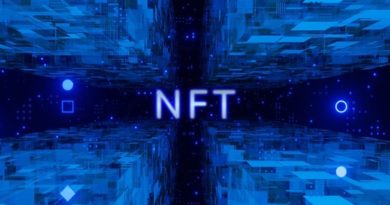Web3 & Decentralized Identity (DID): A New Era in Digital ID
Did you know data is now more valuable than oil? The first web server launched at CERN over 30 years ago. Digital identity systems have grown from early e-commerce sites like Amazon and eBay to today’s social networks.
Yet, a few big tech companies control most of our data. They handle everything from our money to our personal info. Web3 and Decentralized Identity (DID) are changing this. They let users own their data, not big companies.
Centralized systems are always at risk. Big data breaches happen often, exposing millions of records. Also, over a billion people worldwide don’t have official IDs, keeping them from important services.
Blockchain-based DID systems offer a solution. They make verification faster for things like mortgages or healthcare. This way, you can prove who you are without giving away your data to companies forever.
Key Takeaways
- Data’s value now eclipses oil, reshaping digital ecosystems.
- Over a billion people lack formal ID, hindering access to essential services.
- Decentralized Identity (DID) reduces fraud risks by eliminating single points of failure.
- Web3 enables self-sovereign identity, letting users control their data through blockchain.
- Decentralized systems aim to simplify verification while boosting privacy and security.
Understanding the Digital Identity Crisis
Today’s digital identity systems are like old physical ones. They leave users open to data theft and fraud. Centralized databases are like magnets for hackers, while privacy fades as companies make money off our data. The decentralized web could bring us digital sovereignty, but we need to fix big problems first.
The Problem with Centralized Identity Systems
Old systems need third parties to handle identity data. This leads to:
- Single points of failure that hackers love to hit
- Data kept in one place, easy for insiders to mess with
- Users losing control over their data
| Centralized Systems | Decentralized Systems |
|---|---|
| Data stored in central databases | Data spread out across networks |
| Passwords reused everywhere | Cryptographic keys for safe login |
| Companies own our data | We keep our credentials safe |
Data Breaches and Privacy Concerns
In 2022, 15 million records were leaked in just Q1. Stolen IDs are everywhere, making identity theft and fraud easy. For instance:
- Equifax’s 2017 breach exposed 147M records
- The 2021 T-Mobile hack hit 70M customers
Web3 is emerging as a major political force
— Andreessen Horowitz 2023 survey
The Need for User-Controlled Digital Identity
Decentralized systems like blockchain offer self-sovereign identity. Users get:
- Control over their personal data
- No more password reuse worries
- Easy use across different platforms
As the decentralized identity market grows fast, 88.2% CAGR by 2030, tools like verifiable credentials and decentralized identifiers (DIDs) are becoming popular. Moving to the decentralized web lets us take back our digital lives.
What is Web3 and Why Does it Matter?

Many people don’t know what Web3 is, even though it’s becoming more popular. A 2022 Harvard study showed that almost 70% of over 50,000 people couldn’t explain it. But its effects are clear. Web3 is more than just a trend; it’s a new way of using the internet based on blockchain technology and decentralized systems.
| Web1 | Web2 | Web3 |
|---|---|---|
| Static pages (read-only) | Interactive platforms (social media, apps) | User-owned assets/data via decentralized ledgers |
| Read-only content | User-generated content, central control | Decentralized, tokenized assets |
| Example: Early Wikipedia | Example: Facebook, Uber | Example: NFTs, DeFi, DAOs |
At the heart of Web3 is blockchain technology. It makes sure data is safe and can’t be changed. This allows for Web3 applications like NFTs, which are like digital keys to own things online. For example, Nike’s .Swoosh platform lets you buy and own digital sneakers using blockchain.
JPMorgan’s use of blockchain in 2022 also shows big companies are starting to see its value.
- Web3 gaming saw a 60% user surge in 2022
- Ethereum’s core tools saw an 87% download increase
- NFT sales rose 68%, even during market dips
Web3 is all about giving power back to users. It’s different from Web2, where big companies control everything. In Web3, you own your data and decide how it’s used. This means you can have control over your online identity, not just companies.
The Fundamentals of Web3 & Decentralized Identity (DID)
Decentralized Identity (DID) systems change how we think about digital identity. They put control in users’ hands. Crypto technology is at the heart, creating identifiers on blockchains. This ensures security and freedom.
Core Principles of Decentralized Identity
- User ownership: Individuals fully control their identity data
- Privacy by design: Data minimization ensures only necessary information is shared
- Interoperability: Works across platforms without relying on single providers
How DIDs Differ from Traditional IDs
Traditional IDs need third-party checks and central databases. DIDs change this by:
- Removing central authorities like governments or banks
- Allowing users to approve who accesses their data
- Storing credentials on blockchains instead of servers
The Role of Blockchain Technology
Blockchain’s immutable ledgers are key to DID systems. Cryptographic hashing and smart contracts ensure:
- Data integrity through tamper-proof records
- Automated verification via smart contracts
- Zero reliance on intermediaries
Self-Sovereign Identity Explained
Self-sovereign identity (SSI) lets individuals:
- Issue, store, and verify credentials without central control
- Use crypto wallets to manage identity assets
- Choose what information to share with apps or services
With Ethereum Universal Profiles (ERC-725) and verifiable credentials, users own their identity forever. This move shifts from permissioned systems to decentralized freedom.
How Decentralized Identity Works in Practice

Decentralized identity systems are now a reality. Over 70% of financial institutions plan to use them by 2025. They want secure, user-friendly identity management. Let’s see how it works in real life.
DID Methods and Implementations
Decentralized Identifiers (DIDs) use special methods tied to blockchain networks. Some popular ways include:
- did:ethr (Ethereum): Creates tamper-proof DIDs on the Ethereum network.
- did:sol (Solana): Offers fast DID processing for quick verification.
- did:ion (Bitcoin): Uses Bitcoin’s blockchain for secure record-keeping.
- did:web: Works for users without blockchain knowledge.
Verifiable Credentials and Claims
Verifiable credentials, set by the W3C, let users prove identity without sharing all details. For example, someone can show they’re over 18 without giving their birthdate. Zero-knowledge proofs make this possible.
95% of participants verified identities without third-party involvement
. This cuts down on the need for big databases that can get hacked, like Facebook’s 540 million record breach.
Authentication and Authorization in Web3
Old passwords are out, replaced by cryptographic keys. Here’s the change:
- Old method: Username/password systems are easy to hack (responsible for 80% of malware).
- New method: Wallet-based authentication uses private keys. Smart contracts check who can access services.
Financial institutions using this tech cut down on fraud. Users get more control. For example, smart contracts can check if you qualify for a loan without seeing your full financial history.
Benefits of Adopting Decentralized Identity Solutions
Decentralized identity systems change how we handle digital security. Decentralized Identity lets users control who sees their personal data. This is a big win for both users and businesses.
For users, it means less chance of identity theft. They only share verified info. Businesses save money and avoid risks by not relying on big databases.
- Users avoid identity theft by sharing only verified credentials.
- Organizations save millions by avoiding data breaches costing up to $4.45 million on average.
- Self-sovereign identity reduces password fatigue and eliminates the need to trust third parties with sensitive information.
Every year, over 15 million Americans face identity fraud. Decentralized systems spread data across blockchains, making it harder to hack. Banks and healthcare providers save money by using these systems for checks and records.
Decentralized Identity also builds trust. With more cyberattacks in 2023, spreading data keeps it safe. Users get to choose who sees their data, thanks to digital sovereignty. For example, they can prove age without sharing birth dates, cutting down on fraud.
Companies that use these systems look better because they care about privacy. Decentralized identity is a safe, growing option. By 2023, 80% of users will distrust companies with their data. Decentralized solutions fill this gap.
Key Challenges and Limitations in DID Adoption

Decentralized Identity (DID) solutions face big hurdles that might slow their growth. Web3 applications need fast and cheap blockchain systems. But, networks like Ethereum get slow and expensive when many people use them at once.
| Challenge Type | Examples |
|---|---|
| Technical | Blockchain scalability, key management, interoperability |
| Regulatory | KYC/AML compliance, GDPR alignment |
| User Experience | Steep learning curves, high fees, credential fragmentation |
Regulations are a big problem. Governments want strict identity checks, which goes against DID’s idea of self-sovereignty. The EU’s GDPR makes it hard for Web3 applications to handle data. And, laws in different countries can confuse everyone.
Financial institutions already spend a lot on anti-money laundering checks. Adding DID could make this even more expensive.
- Interoperability gaps: No universal standard for DID systems to communicate
- 57% of users want one-click logins—current DID setups often fall short
- Hardware limitations hinder mass adoption of blockchain-based solutions
“Soulbound Tokens could secure digital identities by preventing credential resale,” noted Vitalik Buterin, Ethereum co-founder, addressing security but not usability hurdles.
For DID to grow, it needs to be easy to use. Managing many DIDs or recovering lost keys is hard for non-techies. The $6.8B decentralized identity market by 2027 depends on solving these problems. Until then, Crypto systems and companies must make things simple and accessible to everyone.
Real-World Applications of Decentralized Identity
Decentralized Identity (DID) is changing industries with Web3 innovations like smart contracts. Over 1.1 billion people worldwide lack formal ID. But, mobile-first solutions are helping bridge this gap. Web3 frameworks offer secure, user-controlled systems to tackle these issues.
Financial Services and DeFi
DeFi platforms use smart contracts for Know-Your-Customer (KYC) checks. Users can verify identities once and use them everywhere without paperwork. This makes mortgage processing fast, unlike before.
The $654 billion cost of 2018 data breaches shows why banks like Swissquote are turning to blockchain for identity. It helps reduce fraud.
Healthcare Data Management
Patients now manage their medical histories with verifiable credentials. Estonia’s e-Residency lets users share health records securely, saving costs. Smart contracts make sure only approved providers see sensitive info.
Digital Citizenship and Government Services
Nations like Estonia offer digital IDs for borderless services. Over 70 countries test blockchain voting systems. UNICEF gives digital IDs to 1 million refugees, making services more accessible.
These systems meet GDPR’s Article 20 and cut down on red tape.
Cross-Border Identity Verification
Global travelers and businesses benefit from DIDs in cross-border deals. UNICEF’s ID2020 gives tamper-proof IDs to migrants. Maersk uses blockchain to check supply chain workers.
By 2030, ’s economy could see a $35 billion boost from these systems.
Web3’s decentralized frameworks are key to solving big problems. They reduce identity fraud and empower the unbanked. These applications show DID’s move from theory to everyday use.
Leading Projects and Platforms in the DID Ecosystem
Emerging platforms are changing the decentralized web with new DID solutions. These tools let users control their digital identities. They also help more industries adopt these technologies.
- Cheqd creates verification networks for self-sovereign identities. It makes it safe to share data across different systems.
- Worldcoin uses iris-scanning to make unique digital IDs. These IDs are linked to Ethereum and Polygon blockchains.
- Polygon ID launched a privacy-focused protocol in 2024. It uses zero-knowledge proofs for secure authentication.
- Lifeform raised $300M in funding. It supports 3M+ users with decentralized identity management.
- Galxe offers verifiable credentials for apps. BrightID fights fraud in Web3 communities.
- Trinsic provides enterprise-grade infrastructure. ENS partners with GoDaddy to link .eth domains to web addresses.
Now, over 57 DID tools are available on platforms like Alchemy’s store. This shows how fast innovation is happening. By 2035, 25-35% of digital identity systems could be decentralized. The global market is expected to hit $203.5B by 2034.
Projects like Altme and 0xScore are expanding use cases. They cover healthcare data to crypto wallets. These advancements show a move towards user-owned identities on the decentralized web.
As more people use these platforms, they are changing how we trust services. This includes finance and government services.
The Future of Digital Sovereignty in Web3
Web3 applications are leading the way to a future where digital sovereignty is key online. New trends like soul-bound tokens (SBTs) and zero-knowledge proofs (ZK) are making decentralized identity systems better. These advancements let users prove who they are without sharing personal details, keeping their info safe while making transactions secure.
Emerging Trends and Innovations
- Soul-bound tokens (SBTs): Verifiable, non-transferable credentials for professional and social reputation.
- Decentralized reputation systems: Community-driven validation replacing centralized credit scores.
- Zero-knowledge proofs (ZK): Enable private verification of attributes like age or citizenship without exposing sensitive data.
The Intersection of AI and Decentralized Identity
AI can boost digital sovereignty by checking credentials automatically and reducing bias. Machine learning can quickly verify identities in decentralized databases. But, we must ensure AI is used ethically to avoid misuse. A 2023 MIT Media Lab study found that AI and blockchain together ensure accuracy without privacy loss.
Predictions for Mass Adoption
| Milestone | Timeline | Impact |
|---|---|---|
| Global DID standards | 2025-2027 | Facilitates cross-border identity verification |
| Regulatory frameworks | 2026-2028 | Encourages corporate adoption |
| Consumer-friendly wallets | 2029-2030 | Mainstream user adoption |
By 2030, over 1 billion users might manage identities through Web3 applications, Gartner predicts. Stricter data privacy laws and distrust in centralized platforms after big breaches will help. Decentralized identity systems will open up finance to billions, fitting with Polkadot’s dream of borderless economic participation.
How to Get Started with Decentralized Identity
Starting with decentralized identity means learning about key tools and platforms. Users should pick a Web3-friendly wallet like MetaMask or Trust Wallet. These wallets help create a decentralized identifier (DID) linked to blockchain technology. Here’s how to get started:
- Create a DID using platforms like uPort or Evernym, generating unique cryptographic keys
- Store verifiable credentials (e.g., digital passports) in your wallet for secure access
- Use tools like the Ethereum Name Service (ENS) to simplify identity management
Developers should focus on frameworks like Hyperledger Aries or Morpheus SEED. These tools make it easier to build Web3 apps that check credentials without keeping personal data. For example, Morpheus SEED cuts development time by 40% with its pre-built modules.
| Tool | User Use Case | Developer Use Case |
|---|---|---|
| MetaMask | Personal DID management | Testing environments |
| Hyperledger Indy | N/A | Enterprise-grade DID networks |
| SelfKey | Identity verification | API integrations |
Start with small projects, like Swisscom’s financial services integration. Focus on areas where privacy is key. Use resources like the W3C Verifiable Credentials Data Model and the Decentralized Identity Foundation’s guides for basics.
Start small. Try out use cases like employee onboarding or customer KYC first. With Web3 handling over 1.2B transactions a year, the field is growing fast. Begin now to join a $102B industry that’s expected to grow 21% annually until 2030.
Conclusion: Embracing the Paradigm Shift in Digital Identity
Decentralized identity (DID) systems are changing how we trust each other online. New systems like Spruce ID’s SSX protocol and Microsoft’s ION project are giving power back to individuals. They use blockchain and zero-knowledge proofs to keep data safe and private.
Old identity systems are often hacked, leading to big security problems. DID fixes this by letting users control their data. For example, Spruce’s Credible dApp and Polygon’s Layer 2 scaling make it easier to keep data safe while being efficient.
Even though there are challenges like rules and teaching people, we’re making progress. DID is becoming more important in finance, healthcare, and government. It’s not just about technology; it’s about giving people control over their digital lives.
To move forward, we need to work together. Developers, policymakers, and users must all play a part. The goal is to build a web where everyone has control over their data, keeping it safe and private.




